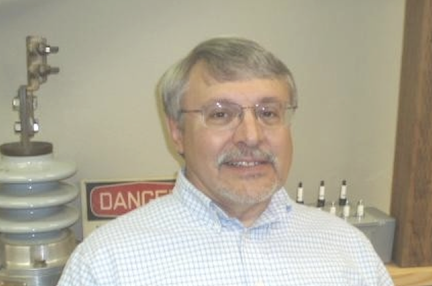Understanding Arc Flash Incident Energy
The joint Northern Virginia/Washington PES Chapter is pleased to host Tony Sleva of Prescient Transmission Systems. Mr. Sleva will be presenting an innovative method for understanding arc flash incident energy based on incident energy time-current curves (TCC) that replace traditional “point in time” calculations.
Date and Time
Location
Hosts
Registration
-
 Add Event to Calendar
Add Event to Calendar
- 1644 North McKinley Rd
- Suite 3
- Arlington, Virginia
- United States 22205
- Building: Arlington Public Library - Westover Branch
- Room Number: Westover Meeting Room
- Click here for Map
- Contact Event Host
-
Please contact Yonael Teklu (yonael@ieee.org or 571-213-5613) for more info.
- Co-sponsored by Industrial Applications Society (IA34 JT. NOVA/WASH) and NOVA Control Systems
Speakers
 Tony Sleva of Prescient Transmission Systems
Tony Sleva of Prescient Transmission Systems
Understanding Arc Flash Incident Energy
Mr. Sleva will present Prescient Transmission Systems innovative approach - incident energy time-current curves (TCC) that replace traditional “point in time” calculations. In the future, the Prescient Transmission Systems approach will be used to evaluate personal protective equipment (PPE’s) when protective relay settings are developed and fuses and circuit breakers are selected.
Arc flash incident energy is used to quantify the amount of energy that will be absorbed by the skin or clothing of an individual who is near an arcing fault. Prescient Transmission Systems concern is that arc flash incident energy is quantified in calories per square centimeter (cal / cm2) even though electrical engineers use volts and amps to calculate watts and vars.
Traditionally, PPE’s (used when working near exposed, energized, electrical equipment) are specified based on calculations that include distance from an arc source, maximum fault current, and fault clearing time. These calculations, while accurate, need to be updated whenever the magnitude of short circuit current or the fault clearing time change.
Prescient Transmission Systems has developed incident energy time-current curves (TCC) that replace traditional “point in time” calculations. These TCC’s were developed using arc voltage, BIL, minimum clearance to live parts, and working clearance to calculate incident energy in watt-seconds per square inch (watt-sec / in2) that correspond to NEC cal / cm2 values. These TCC’s are consistent with traditional incident energy calculations using IEEE 1584 methodology.
The advantage of withstand curves is that arc flash incident energy can be evaluated for wide variations in fault current and / or clearing time when selecting protective relay settings, fuse ratings and circuit breaker characteristics.
Mr. Sleva will explain arc flash incident energy calculations and the basis for converting from “Point In Time” to “Time Current Curves”.
Biography:
Mr. Sleva’s experience includes design and analysis of transmission and distribution substations, switchyards, transmission lines, distribution lines, power plant electrical systems, railway electrical systems, electric dredges, and industrial plant electrical systems with an emphasis on protective relaying, short circuit analysis and arc flash considerations, electrical system operations, cold load inrush phenomena, aging of electrical equipment, and security of substation hardware.
He has developed scoping studies, procurement specifications, detailed design documents, drawings, and supporting calculations; witnessed factory acceptance tests; managed the installation of equipment; inspected facilities prior to initial energization; and led forensic teams that were formed to determine root cause and extent of conditions subsequent to equipment failures. He has worked in the electrical power industry throughout the United States, including Alaska and Hawaii, as well as in Canada, England and Belgium.
He is a Life Senior Member of IEEE, member of IEEE’s Power System Relaying Committee (PSRC), former member of IEEE’s Nuclear Power Engineering Committee (NPEC), graduate of Penn State University, licensed professional engineer in Pennsylvania and Maryland, and an instructor at University of Wisconsin – Milwaukee’s School of Continuing Education.
Mr. Sleva has authored a textbook, Protective Relay Applications, which has been published by CRC Press.
Email:
Address:Prescient Transmission Systems, 16000 SW Loon Drive, Beaverton, Oregon, United States, 97007
Tony Sleva of Prescient Transmission Systems
Understanding Arc Flash Incident Energy
Biography:
Email:
Address:Beaverton, Oregon, United States
Agenda
6:30 - 6:45pm Social Hour, Snacks and Refreshments
6:45 - 7:00pm Chapter announcements and Introductions
7:00 - 7:45pm Presentation
7:45 - 8:15 pm Questions, Comments, End
Please RSVP/Register so that we can provide for adequate refreshments!! Thank you.
Please register early due to the limited space.

